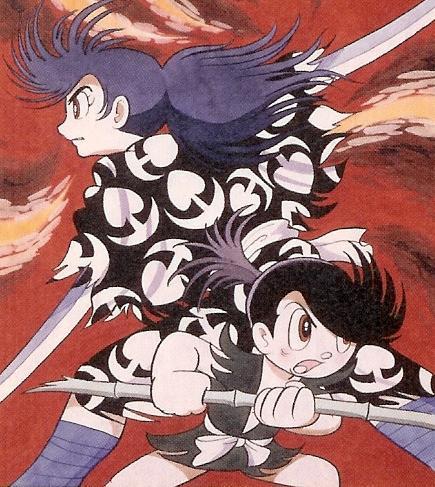 |
| Dororo |
As well as being one of [if not] the most popular Japanese comic book artists, Tezuka is undoubtebly one of the most prolific. His body of work reportedly lists 700 titles from in his 40 year career. His influence in the comic book history is indelible even after he passed-away in 1989 his work still garners praise and noteriety from readers - old and new- and peers, most notablly winning a string of Eisner awards from 2004-2009 for Buddha and Dororo.
Even in the light of his fame, Tezuka still sought out to challenge himself and probably the readers and expand the medium of manga. These are a few works that shows him trying to do just that:
'Adolf' known in Japan as Adolf ni Tsugu (アドルフに告ぐ Adorufu ni Tsugu?, literally: "Tell Adolf")
Original run: 1983-1985 in Shukan Bunshun Magazine
Set in a pre WWII world, it follows the story of Three men named Adolf and a Japanese reporter Sohei Toge. Adolf Kamil is an Ashkenazi Jew living in Japan. His best friend Adolf Kaufmann is of both Japanese and German descent, whos father is an member of the Nazi Party and would like his some to support The Third Reich . The third Adolf is Adolf Hitler, the dictator of Germany.
Ayako Original run: 1972-1973 in Big Comic Magazine
Ayako show the tensions in the Tenge family, a rich land owning clan, set in the years during the reformation of Japan by the Americans after WW2 up to the late 60s. Ayako is also the name of the child born of an incestuous affair by the patriarch of the Tenge family and his daughter-in-law.
MW
Original run: 1976-1978 in Big Comic Magazine
MW follows the relationship between Japanese priest Father Garai, his connection to serial killer Michio Yuki who was effected by the MW gas which has lead to his criminal lifestyle. This manga while containing an explicit homosexual relationship is only one of the reasons for its infamous reputation. The art style was influenced by the gekiga movement dominant in the 1960s-70s, which was more experimental, and explicit mostly aimed at a much older readership.



No comments:
Post a Comment